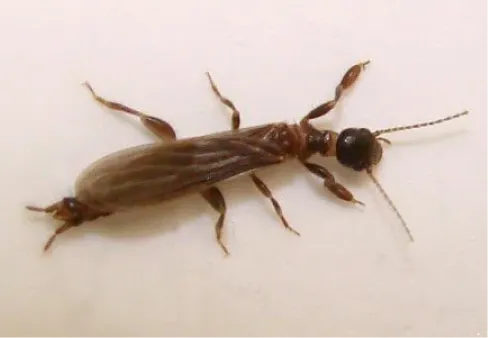Field crickets are common black insects causing lawn damage and noise issues. They enter buildings seasonally and can damage fabrics and organic materials when indoors.

Field crickets are common outdoor pests throughout Southern California, known for their loud chirping and occasional invasion of homes and structures. These black crickets are primarily lawn and garden pests but can become indoor nuisances when seeking shelter or warmth.
These insects can cause damage to plant materials and seedlings in gardens and landscapes, though their impact is usually minimal compared to other pests. They reproduce quickly, with females capable of laying 50-100 eggs per cycle, leading to potential population explosions under favorable conditions. While their outdoor presence can actually be beneficial by consuming weed seeds and dead plant material, they can become problematic when large numbers move indoors during extreme weather conditions or seasonal changes. Their nocturnal activity and loud chirping can be particularly disruptive when they enter homes.

Anatomy of Field Crickets
Field crickets have characteristic features that distinguish them from other cricket species.
- Head
- Antennae
- Thorax
- Abdomen
- Legs
- Wings

How to Identify Field Crickets
Field crickets are shiny black to dark brown, measuring 1/2 to 1 inch in length. They have long antennae, powerful jumping legs, and wings that males use for chirping.

Habitat of Field Crickets
These crickets are commonly found in lawns, gardens, and building perimeters. They prefer areas with ground cover and moisture, often seeking shelter under rocks, logs, or debris.

Warning Signs of Field Crickets
Watch for loud chirping, especially in the evening, lawn damage, and visual sightings. Entry points around buildings and ground holes may indicate their presence.
Warning Signs of Field Crickets
Watch for loud chirping, especially in the evening, lawn damage, and visual sightings. Entry points around buildings and ground holes may indicate their presence.







Control Methods for Field Crickets
Control methods include perimeter treatments, reducing outdoor lighting, and sealing entry points. Prevention focuses on maintaining barriers and removing harborage areas near structures.
Male field crickets chirp to attract mates and establish territory. The chirping sound is made by rubbing their wings together.
Field crickets can damage plants, seedlings, and fabric materials. Large numbers can cause significant lawn damage.
Field crickets are most active at night, with peak activity occurring during warm evenings.
Field crickets often enter through gaps around doors, windows, and foundation cracks, particularly when seeking warmth or moisture.
Field crickets are omnivorous, feeding on plants, seeds, and occasionally other insects. They can also damage fabrics and paper products when indoors.
Reduce outdoor lighting, seal entry points, and maintain proper yard drainage. Remove dense vegetation near building foundations.
We Provide the Care toEliminate Termites and Pests For Good
Protecting your home from pests shouldn't be complicated. The Termite Guy makes it simple with wholistic solutions to inspect, treat, and restore your home back to perfection. With a 5 year pest-free warranty and over 25 years of success, we ensure every home is safe and secure.

Inspections

Treatments

Damage Repair
.avif)
.avif)
.avif)
.avif)











































